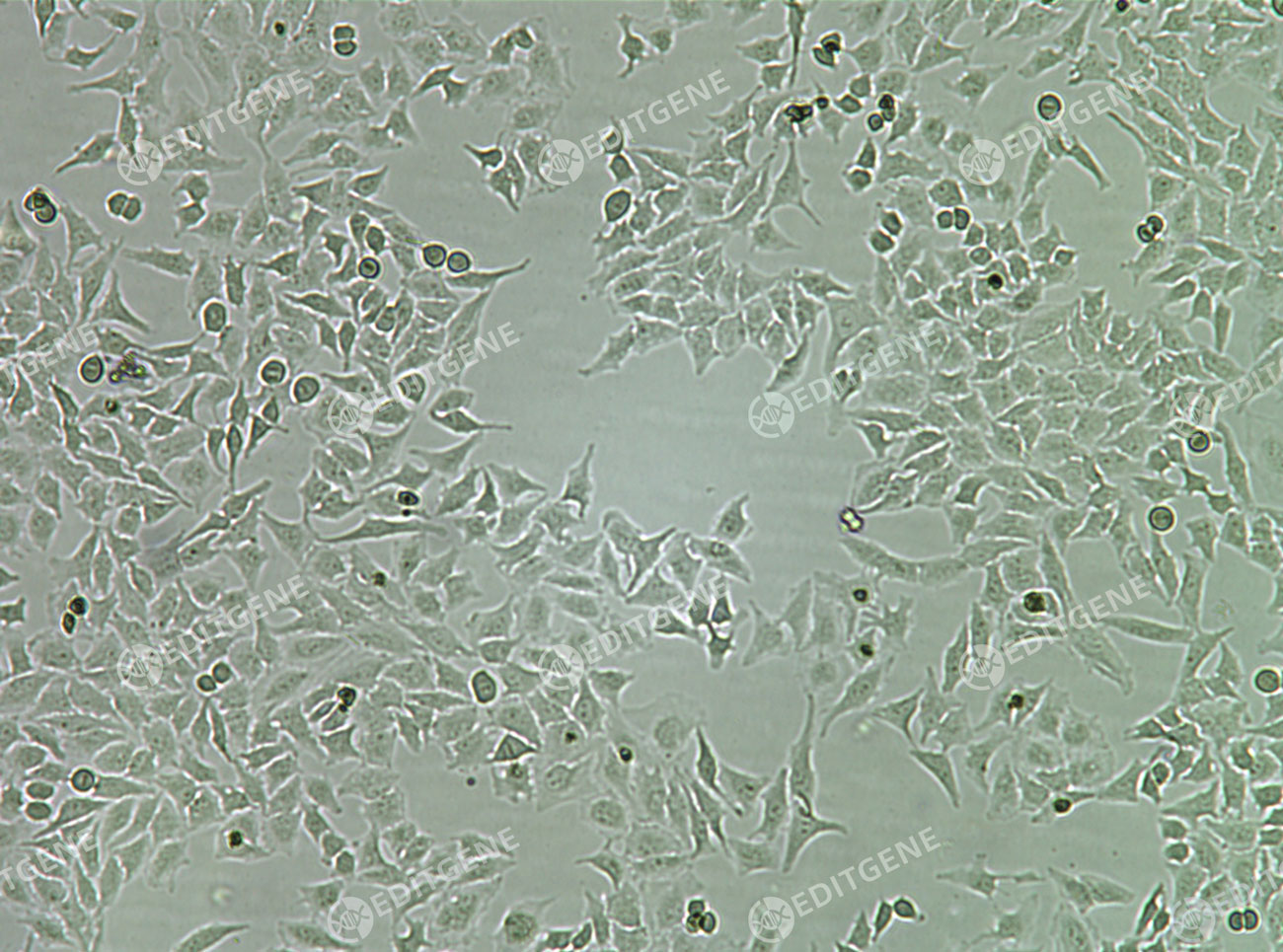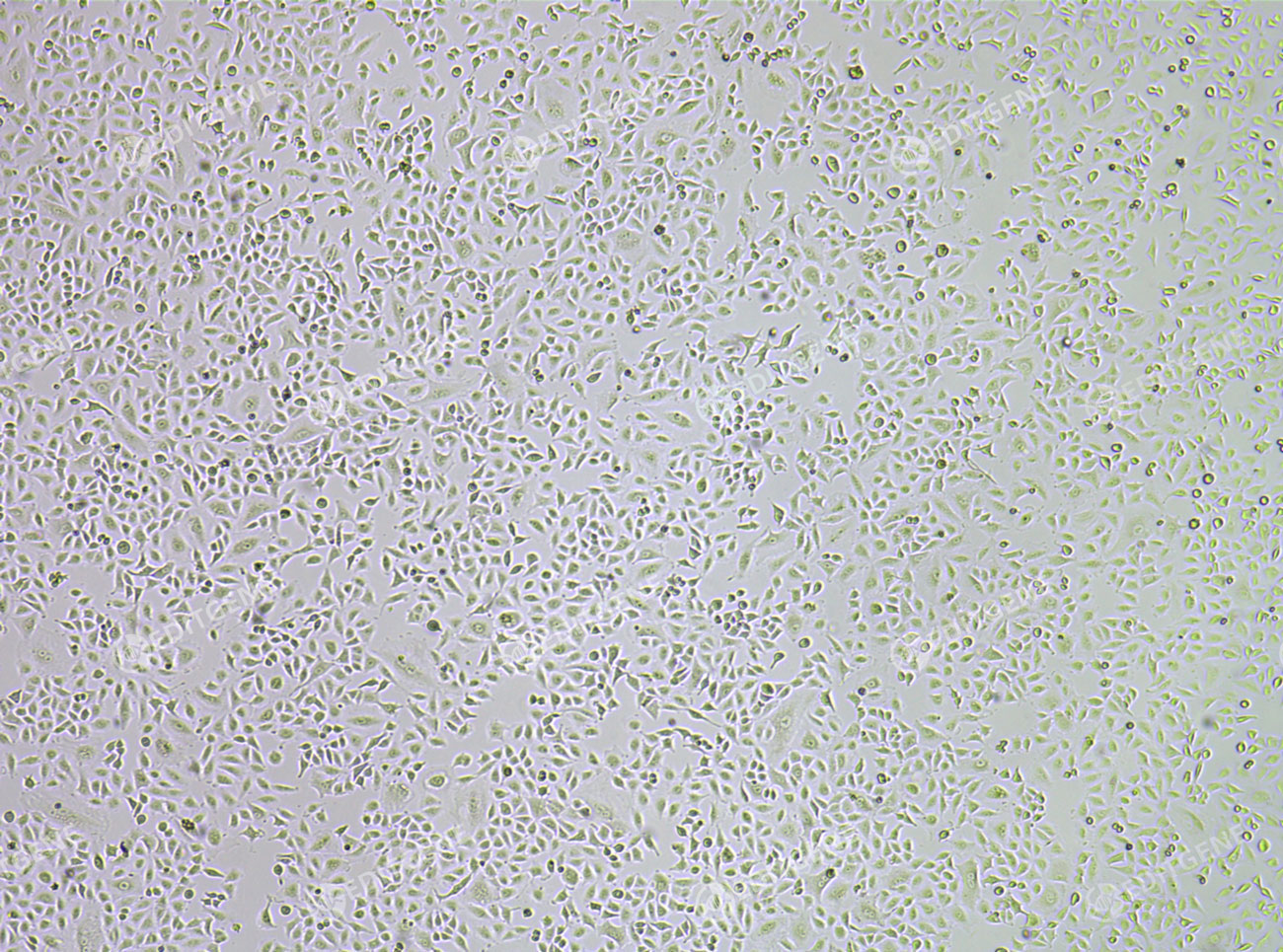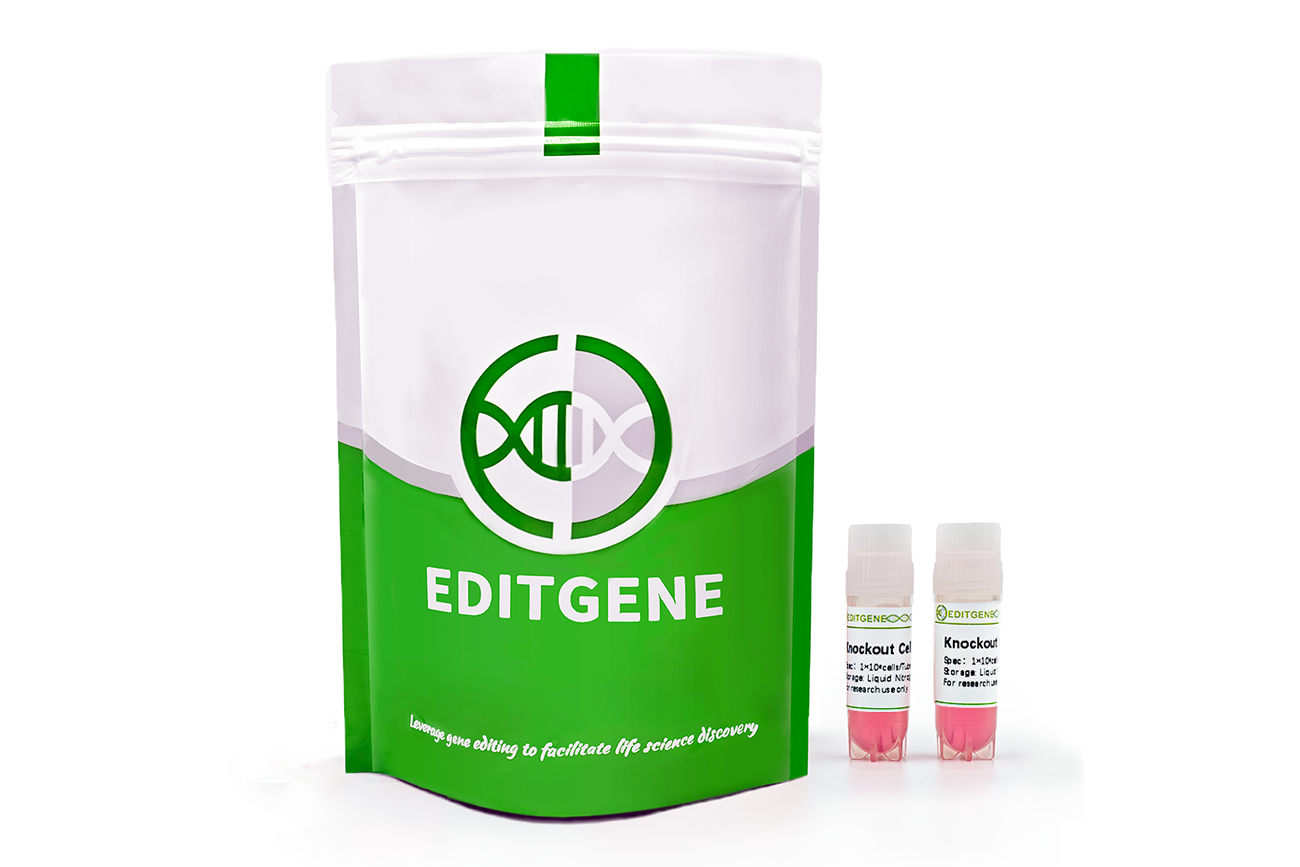-
Cas12Cas13Cas9
-
gRNAcrRNAIND gRNAGMP gRNA
-
CRISPR Knockout KitTransfection KitLentiviral Packaging KitCRISPR Point Mutation KitpiggyBac Transposon Kit
-
KO Cell LinePoint Mutation Cell LineOverexpression Cell LineCas9 Expressing Cell LineGFP Cell LineLuciferase Cell LineWild Type Cell Line
-
-
KO PlasmidPE PlasmidOther Plasmids
-
crRNAIsothermal DNA KitIsothermal RNA KitTest StripsProbesT7 Transcription KitRibonuclease Inhibitor
-
Mycoplasma Kit
-
Mouse Models
SPSB3 Knockout HCT 116 Cell Line

Cat.No.:
EDJ-KQ38188
Gene:
SPSB3
Gene ID:
90864
Size:
1×10⁶cells
Introduction
Details Product Information
| Cat.No. | EDJ-KQ38188 |
|---|---|
| Product Name | SPSB3 Knockout HCT 116 Cell Line |
| Cell Line | HCT 116 |
| Gene | SPSB3 |
| NCBI Gene ID |
90864 |
Cell recovery
Note: After receiving the cells, please store in liquid nitrogen. Take it out 10 minutes before recovering cells and place it at -80 ℃ to allow the liquid nitrogen in the tube to evaporate
1. Preheat the water bath and complete culture medium at 37 ℃;
2. Add 6mL of complete culture medium to a 15mL centrifuge tube;
3. Gently swirl the cryopreservation tube in a 37 ℃ water bath until a small piece of ice remains in the cryopreservation tube, please thaw it within 1 minute, and the cap should not touch water;
4. In the ultra clean bench, before opening the cap, wipe the outside of the cryopreservation tube with 75% alcohol;
5. Transfer all the liquid with a pipette to a centrifuge tube of preheated complete culture medium;
6. Rinse the cryopreservation tube with 1mL of complete culture medium to collect residual cells;
7. Centrifuge the cell suspension at 1100 rpm for 4 minutes (centrifugation speed and time depend on cell type);
8. After centrifugation, check if the supernatant is clear and if there is cell pellet at the bottom; inside the hood, carefully pour out the supernatant, add 1mL of complete culture medium, gently resuspend the cell pellet;
9. Evenly seed cells into a T25 flask or culture container with an equivalent bottom area. Add a sufficient amount of complete culture medium, and the total amount of culture medium in a T25 flask shall not be less than 6mL (the actual size of the flask depends on the number of cells frozen in the cryopreservation tube);
10. Gently mix the cells well and place them in a 37 ℃, 5% CO2, saturated humidity incubator (the culture environment depends on cell type and culture medium);
11. Observe the cell status on next day:
(1) If the adherent cells adhere well, change fresh complete culture medium; If the cells are observed to be in a round and bright shape but not adhering to the plate, continue cultivation for 24 hours. Afterwards, based on the growth status of the cells, replace the complete culture medium every 2-3 days, observe the cells, and passage cells when confluence rate >80%. If the cell growth is slow or the confluence rate is low, the frequency of medium change can be reduced;
(2) When recovering suspension cells, place them in a relatively small container and use a culture medium containing 20% serum for recovery. If the suspended cells are in good condition, change fresh complete culture medium; If the cell status is poor and appears grayscale, it can be further cultured for 72 hours. Change fresh medium if observe live cells. If no significant changes are observed, please contact us for after-sales service in a timely manner.
Passage method
1. Preheat the complete culture medium, PBS, and trypsin-EDTA to 37 ℃;
2. Vacuum and discard the supernatant;
3. Gently add PBS (~6mL for a T25 flask) to rinse the cells, then discard PBS, please avoid stirring the cell layer;
4. Add trypsin-EDTA (~3mL in a T25 flask) and quickly spread evenly to ensure full contact with the cell layer; Place it in the incubator for digestion;
5. Observe digestion under a microscope. After ~70%-80% of the cells become round, gently tap the flask to detach the cells;
6. Immediately add 2 times volume of complete culture medium (about 6mL in T25 flask), then gently shake to quickly mix the medium and trypsin to terminate digestion;
7. Use a pipette to gently blow the bottom of the culture container with the medium, and try to blow down all the cells as much as possible; Note: avoid to generate bubbles;
8. Transfer the cell suspension to a centrifuge tube. Wash the flask once with PBS (about 3mL added to T25 flask) and collect residual cells;
9. Centrifuge cell suspensions at 1100 rpm for 4 minutes;
10. Remove the supernatant after centrifugation. Add 1mL of complete culture medium, gently resuspend the cell pellet;
11. Seed cells in a certain passage ratio. It is recommended to pass the cells in a ratio of 1:3 for the first time. If the cells grow to >80% confluency within two days, the passage ratio can be increased. If the cells not grow to >80% confluency for three or four days, the passage ratio can be reduced;
Note: Please adjust the passage ratio based on the actual growth of the cells.
12. Place them in an incubator with 37 ℃, 5% CO2 and saturated humidity (if an culture flask is used, the cap should be loosened before putting them into the incubator to facilitate full Gas exchange, unless a ventilated flask or a breathable cap is used);
13. Observe the cell status on the next day. If there are a lot of dead cells, change to a fresh culture medium. Change fresh medium base on the cell growth. Cells need to be passaged when the confluency >80%.
Storage
Liquid nitrogen
Related Product
-
Gene: PRMT6
Gene ID: 55170
Size: 1×10⁶cells
Cell Form: Adherent
-
Gene: DGAT2
Gene ID: 84649
Size: 1×10⁶cells
Cell Form: Adherent
-
Gene: ENG
Gene ID: 2022
Size: 1×10⁶cells
Cell Form: Adherent
-
Gene: PLAUR
Gene ID: 5329
Size: 1×10⁶cells
Cell Form: Adherent
-
Gene: HELLS
Gene ID: 3070
Size: 1×10⁶cells
Cell Form: Adherent
-
Gene: EPB41L1
Gene ID: 2036
Size: 1×10⁶cells
Cell Form: Adherent
-
Gene: LTA4H
Gene ID: 4048
Size: 1×10⁶cells
Cell Form: Adherent
-
Gene: S100A3
Gene ID: 6274
Size: 1×10⁶cells
Cell Form: Adherent
-
Gene: SNN
Gene ID: 8303
Size: 1×10⁶cells
Cell Form: Adherent
-
Gene: ZNF592
Gene ID: 9640
Size: 1×10⁶cells
Cell Form: Adherent
-
Gene: DPYSL4
Gene ID: 10570
Size: 1×10⁶cells
-
Gene: PNRC1
Gene ID: 10957
Size: 1×10⁶cells
Cell Form: Adherent
-
Gene: ARSG
Gene ID: 22901
Size: 1×10⁶cells
Cell Form: Adherent
-
Gene: NIPA1
Gene ID: 123606
Size: 1×10⁶cells
-
Gene: MARCHF8
Gene ID: 220972
Size: 1×10⁶cells
-
Gene: TMEM139
Gene ID: 135932
Size: 1×10⁶cells
Cell Form: Adherent
-
Gene: TMEM164
Gene ID: 84187
Size: 1×10⁶cells
Cell Form: Adherent
-
Gene: RUNDC1
Gene ID: 146923
Size: 1×10⁶cells
Cell Form: Adherent
-
Gene: SPSB3
Gene ID: 90864
Size: 1×10⁶cells
-
Gene: CCDC134
Gene ID: 79879
Size: 1×10⁶cells
Cell Form: Adherent
-
Gene: SLC25A30
Gene ID: 253512
Size: 1×10⁶cells
Cell Form: Adherent
-
Gene: ACOT13
Gene ID: 55856
Size: 1×10⁶cells
-
Gene: CEACAM19
Gene ID: 56971
Size: 1×10⁶cells
-
Gene: FAM227A
Gene ID: 646851
Size: 1×10⁶cells
-
Gene: KYAT3
Gene ID: 56267
Size: 1×10⁶cells
-
Gene: MCIDAS
Gene ID: 345643
Size: 1×10⁶cells
-
Gene: SLC30A6
Gene ID: 55676
Size: 1×10⁶cells
-
Gene: TSSK4
Gene ID: 283629
Size: 1×10⁶cells
-
Gene: SATB1
Gene ID: 6304
Size: 1×10⁶cells
-
Gene: SLC25A35
Gene ID: 399512
Size: 1×10⁶cells
Subscribe
You can unsubscribe from these communications at any time. For more information on how to unsubscribe, our privacy practices, and how we are committed to protecting and respecting your privacy, please review our Privacy Policy.
By clicking submit below, you consent to allow EDITGENE to store and process the personal information submitted above to provide you the content requested.






